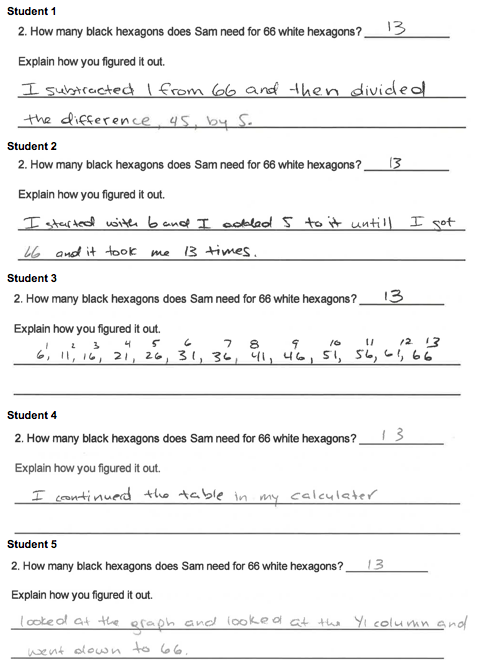I’ve seen a lot of interest in applying artificial intelligence to education, but the efforts appear to be starting in the wrong places.
What is being built
We have AI being applied to write lessons for educators.
These early efforts create lessons that are not likely helpful for their target audience — educators who need lessons targeting specific concepts for which the educators do not already have lessons. The most likely educator in this situation is an early career educator or an educator teaching a new grade level or course. In the long run, neither of these groups is well-served by poorly written lessons by a “novice” AI curriculum designer.

This sample prompt might give an educator an idea of how to generate this task, but it isn’t something that anyone should put directly in front of students.
We have AI being used to tutor students.
Dan Meyer wrote a great post outlining one of these efforts. The critical issue is that the AI tutors are fumbling around in the dark, trying to support students without understanding their needs. Where are the supportive visuals? Where are the simplifying examples? Why does every tutoring program rely almost entirely on questions?
We have AI being used to grade students.
This is a time-consuming task for educators, to be sure, but auto-grading forgets the key reason educators do the task in the first place—to learn more about their students! A summary report reveals little about student learning. By removing educators from the job of looking through their student work, we make educators blind when they plan future lessons for those students.

This is my first attempt at using a custom AI to create an assessment on the Common Core standards K.CC.A.2, K.CC.C.7, and K.MD.B.3. This isn’t even in the ballpark of useful.
What should be built
AI categorization of student thinking
I read a fascinating tweet the other day about an AI being used to translate between two languages. It made me wonder—can AI be used to translate between the language students use when initially approaching a concept and the language educators as people who have already mastered the concept?
Students use their partial understanding to make sense of concepts, which results in them using novice language to describe their ideas. Frequently, the best person to explain a concept is someone who just learned it rather than someone who knows it so well that they forget what it felt like when learning it. This is part of the reason group work works.
This novice language can be hard for educators to understand, especially when they have many students in their classes with different ways of understanding an idea. Decision-making about what to do to support students at the moment is hampered by this challenge in translation. What if AI could be leveraged to translate what students say into how it connects to what educators know about the topic? This would help educators build what Deborah Ball calls Mathematical Pedagogical Knowledge for Teaching, but more immediately, it would help them make better decisions about supporting their students.
Another main reason to start with a project like this is that AI tutoring and other educational uses of AI almost all depend on this capacity.
Insights about student learning from student work
What are these students thinking? What strategies are they using?

(source: NCTM Blog)
This is a task every mathematics educator needs to know how to do. Take a sample of student work, figure out what students are doing, and then make a plan of action around this thinking.
It is also a task on which AI could shine. Most AI programs are well suited to categorization problems, which is exactly what this is. Large samples of similar student work on similar problems are impossible for educators to analyze, except over a lifetime of working with many students, but AI would trivialize this task.
Note that this task is fundamentally different than auto-grading work. Grading is about evaluating work; here, we want to understand the work and how it connects to our goals for teaching.
The Future
It is obvious that AI has great potential in education. Who is working to realize that potential?
Cal J Armstrong says:
Umm, OAME (Ontario Association for Mathematics Education) is trying. https://www.linkedin.com/pulse/harnessing-ai-mathematics-education-cal-armstrong-tshwc
March 10, 2024 — 1:35 am
David Wees says:
Cal, the efforts you described look terrific. They are being done initially as a bit of an experiment and the results seem to be helping the educators you are working with. How robust do the lesson plans being generated look so far?
March 11, 2024 — 6:58 pm
Cal J Armstrong says:
(Bias as the programmer) They are middling to good and I’m working on pushing them towards very good. The difficulty is not just asking them to do a good job with the manner of lesson plan design but also understanding what needs to be taught, what does not need to be taught (and AI does not understand negatives well) and how it should be taught. These are not simple issues — teaching teachers how to prompt will not make this go away. I will say, the lesson plans are much better than the ones I’ve seen generated by for-pay options, and are much more aligned with a pedagogy centred on student learning as envisioned by Ontario’s Growing Success.
I know you’re not an Ontario educator but if you want to give it a spin, touch base – your feedback would be invaluable, especially as I’m on March Break and have time to work more extensively on the project.
.
March 11, 2024 — 9:09 pm